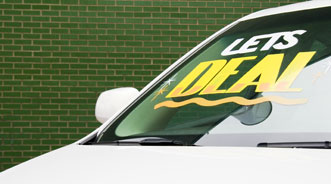Why Used-Car Sales Are Looking Flat in May

In what appears to be a “lackluster” month, CNW Research is predicting that May will end up being a flat market for used-car sales.
But if stagnant sales are puzzling, the firm explains why we’re seeing such a lukewarm environment on the used-car side.
Starting with the basics, CNW said in the Retail Automotive Summary released Monday afternoon that it is predicting 4.32 million used sales for the month.
This would be a 0.3-percent year-over-year hike; an increase CNW president Art Spinella finds “slumpish.” What’s more, that growth is attributable to casual sales.
Franchised dealers are expected to see their used sales dip 2.1 percent at 1.55 million, which is “chipping away at the year-to-date gains,” Spinella noted.
Meanwhile, independents are on track to drop 12 percent with 1.30 million sales this month. This group of dealers is “losing much of its year-over-year increase to casual or private party sales that are up nearly 18 percent.”
Specifically, CNW is forecasting 1.47 million casual sales this month, which would mark 17.8-percent growth over May 2012.
To explain just what is happening in the used-car market, CNW first turns to the overall industry. In looking at the combined market of new- and used-car sales, Spinella notes that “used-car sales drive total vehicle purchases.”
He added: “New cars stick pretty close to a relatively narrow margin between 30,000 and 45,000. Used, on the other hand, fluctuate in large part due to weather, season and must versus want drivers among used-car shoppers.
(Editor’s Note: In an earlier section of the RAS, Spinella explains the shifts in the used-car business as it relates to the “must replace” mindset toward purchasing versus the “add on” sales of consumers for want rather than need. Further analysis on this is in a subsection below).
“Because of this heavy seasonality in used-car sales, the channel shoppers use also is driven by season,” Spinella continued. “For example, in January of last year, franchised dealers took nearly 43 percent of add on sales while independents collected 36.7 percent and casual held 20.5 percent. In July, however, franchised dropped to 35 percent with independents at only 19.5 percent, while casual snapped up 45 percent.
“The same pattern is playing out in 2013 and explains the underlying shifts in market share between dealers and private-party sales,” he added. “Expect, in the medium term, for this to continue leaning toward casual sales as new and faster ways of selling cars online emerge.”
‘Must Replace’ Vs. ‘Add-On Sales’
As Spinella puts it, the replacement vehicle sale has long been vitally important for the used-car market. Typically, anywhere from 45 percent to 80 percent of used sales, depending on the season, come from the consumer who needs to replace a car that’s either “worn out” or no longer meets his or her needs, he noted.
However, times are changing.
Spinella has found that “the slow, sporadic turnaround in the economy has begun to draw down those ‘must replace’ purchases with much of the industry growth leaning now to ‘add-on’ sales to people who are buying a vehicle for personal rather than purely transportation reasons.”
Take the opening five months of this year. The “must replace” category has had its softest growth in seven years at roughly 3 percent, while “add-on” sales have seen their strongest growth in five years at 5.5 percent.
Looking at the “must replace” sales in more detail, Spinella highlights the role of seasonality in this category.
“Perhaps the strongest indicator of seasonality in used-car sales can be seen in the month-to-month share that ‘must replace’ garners,” he said.
He gives the example of January 2012, when 78 percent of the 2.2 million used units sold were to consumers finding it “absolutely” necessary to replace their rides.
“Yet by July, even though the total ‘must replace’ units were more than 100,000 vehicles higher in number, the share of ‘must replace’ fell to barely 40 percent of total sales,” he added.
And then on the other end of the spectrum, there were just 478,142 “add-on” sales in January 2012; a number that leaped to 2.75 million units in July 2012.
“What makes these splits important to dealers are the marketing implications. As an industry, the ‘must replace’ number fluctuate far less radically from month to month,” Spinella noted. “The targeted audience in January-March and November-December are ‘must replace’ shoppers.
“It’s a store-versus-store competition to offer a good mix of relatively reasonably priced vehicles to those who are probably more cash strapped than the ‘add-on’ buyers,” he continued. “In the other months, however, the ‘must replace; buyers are important, but the added business will come from ‘add ons.’ And they are looking for a wide selection of models carrying higher prices and more ‘glitz.’”
Joe Overby can be reached at joverby@autoremarketing.com. Continue the conversation with Auto Remarketing on both LinkedIn and Twitter.

 View The Latest Edition
View The Latest Edition

